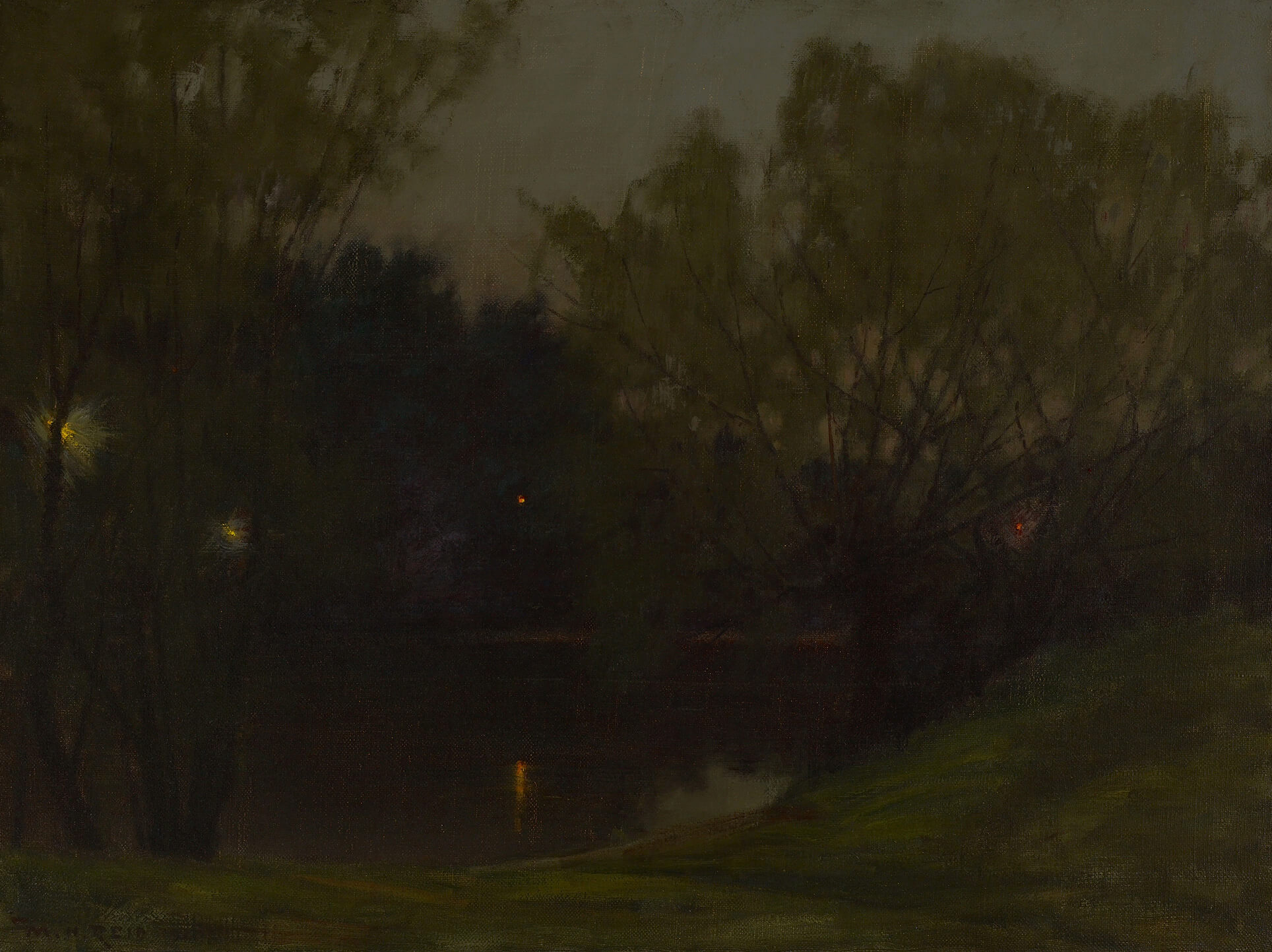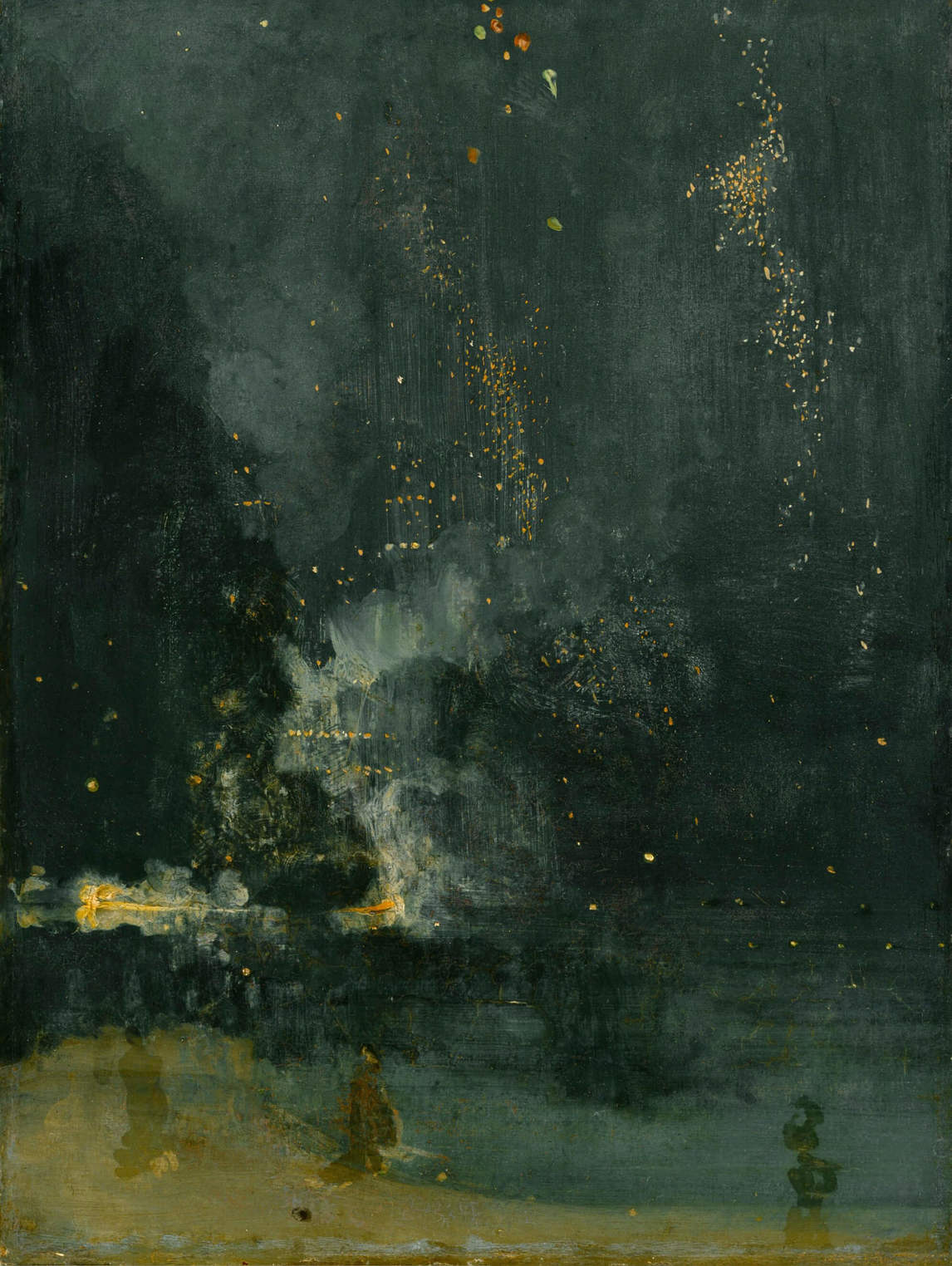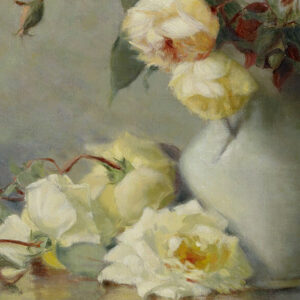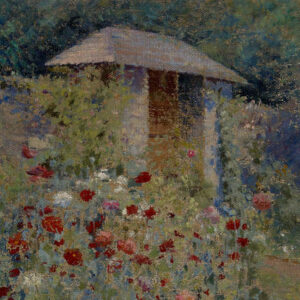At Twilight, Wychwood Park 1911

Mary Hiester Reid, At Twilight, Wychwood Park, 1911
Oil on canvas, 76.2 x 101.6 cm
Art Gallery of Ontario, Toronto
In this work Hiester Reid depicts Wychwood Park, the neighbourhood that she and George Agnew Reid (1860–1947) moved to in 1908 and lived in for the rest of their married lives. Working in a palette of night shades—dark browns, greens, and greys—the artist demonstrates her keen engagement with Tonalist art. In the 1870s American artist James Abbott McNeill Whistler (1834–1903) produced a series of moonlit scenes that he titled Nocturnes, imbuing them with musical associations. Hiester Reid also produced a series of twilight and night scenes, such as Moonrise, 1898, Nightfall, 1910, and Night in the Village (England), n.d.

This work is one of Hiester Reid’s latest and most accomplished nocturnal scenes. Here the artist portrays her own domestic residential community at night, located beyond a body of water in the foreground. This compositional arrangement emphasizes how the Reids’ house and all those around it were designed to intermingle with the landscape.
The Wychwood Park development was first settled by landscape painter Marmaduke Matthews (1837–1913) in 1874, who originally called his house Wychwood. The area eventually grew to become a privately developed nine-hectare residential enclave located northwest of downtown Toronto. The designers responsible for developing Wychwood Park looked to the proclamations of British art critic John Ruskin (1819–1900), who, in his 1870 Oxford Lectures on Art, declared that art had the ability to unite beauty and morality, and who was the inspiration behind the Aesthetic movement. Alla Myzelev explains that, as “the inhabitants of Wychwood created the first artistic community that blended mainstream, middle-class values with artistic inspirations . . . , Wychwood Park was one of the first suburbs to implement the ideas of the Garden City movement. The influence of Garden City ideas led to the incorporation of the Ontario landscape into its design and architecture and was also thought to offer the intangible values of emotional and moral health.”
Drawing on the priorities of the Aesthetic movement, as well as those of the British and American Arts and Crafts movement, Hiester Reid’s husband, George Reid, a former architectural apprentice, designed a two-storey stucco house incorporated into the surrounding landscape. This recalls assertions he made in an 1891 lecture to the members of the Toronto Architectural Sketch Club; there he proclaimed, “The most prominent defect in modern architectural designs is a disposition to seek a perfect symmetry, but the architect who draws his inspiration from nature recognizes that perfect symmetry is as much abhorred by nature as a vacuum.” Hiester Reid designed the gardens. The Reids named the house Upland Cottage, as it was located on the crest of the hill on their property. Ultimately, as shown in this work, the couple’s residence complemented their appreciation of and respect for their natural surroundings.
This unification of architectural design with the natural world was one of the primary beliefs of the Arts and Crafts movement. A member of the Arts and Crafts Society in Canada, founded in Toronto in 1902, Hiester Reid uses a limited and thus highly skilled painterly palette to underscore both her awareness of and dedication to this movement. She has painted the Wychwood Park neighbourhood so that it is virtually impossible to make out any individual homes. The community is engulfed in dark shadows, and the surrounding trees appear silhouetted against the waning rays of sunset lighting the sky in the background. Wychwood Park’s presence is signalled only by the artwork’s title and the appearance of seemingly random pinpricks of warm colours—reds and oranges that suggest lamplight.

 About the Author
About the Author
 More Online Art Books
More Online Art Books
 Acknowledgements
Acknowledgements